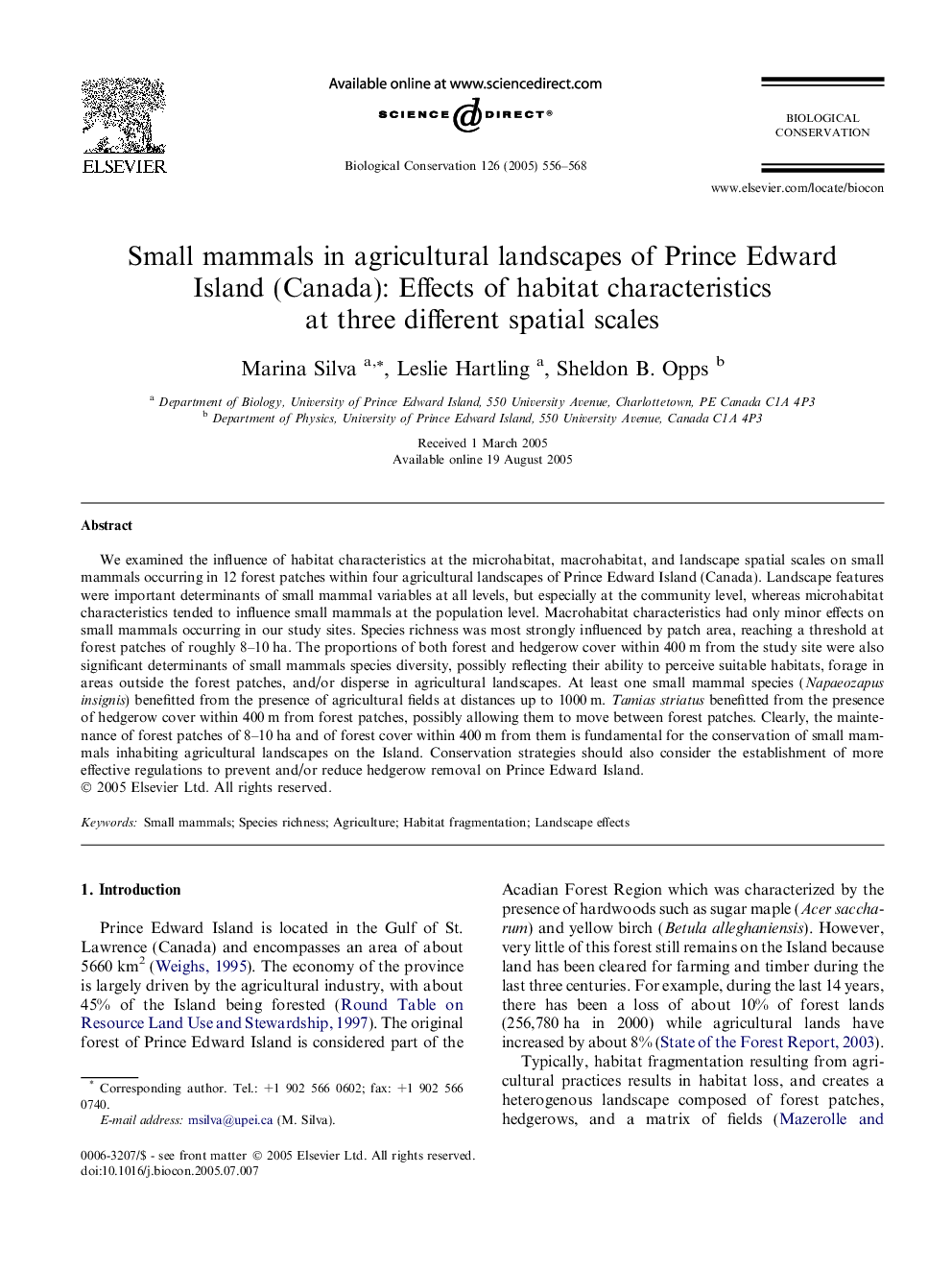| Article ID | Journal | Published Year | Pages | File Type |
|---|---|---|---|---|
| 9445959 | Biological Conservation | 2005 | 13 Pages |
Abstract
We examined the influence of habitat characteristics at the microhabitat, macrohabitat, and landscape spatial scales on small mammals occurring in 12 forest patches within four agricultural landscapes of Prince Edward Island (Canada). Landscape features were important determinants of small mammal variables at all levels, but especially at the community level, whereas microhabitat characteristics tended to influence small mammals at the population level. Macrohabitat characteristics had only minor effects on small mammals occurring in our study sites. Species richness was most strongly influenced by patch area, reaching a threshold at forest patches of roughly 8-10Â ha. The proportions of both forest and hedgerow cover within 400Â m from the study site were also significant determinants of small mammals species diversity, possibly reflecting their ability to perceive suitable habitats, forage in areas outside the forest patches, and/or disperse in agricultural landscapes. At least one small mammal species (Napaeozapus insignis) benefitted from the presence of agricultural fields at distances up to 1000Â m. Tamias striatus benefitted from the presence of hedgerow cover within 400Â m from forest patches, possibly allowing them to move between forest patches. Clearly, the maintenance of forest patches of 8-10Â ha and of forest cover within 400Â m from them is fundamental for the conservation of small mammals inhabiting agricultural landscapes on the Island. Conservation strategies should also consider the establishment of more effective regulations to prevent and/or reduce hedgerow removal on Prince Edward Island.
Related Topics
Life Sciences
Agricultural and Biological Sciences
Ecology, Evolution, Behavior and Systematics
Authors
Marina Silva, Leslie Hartling, Sheldon B. Opps,
